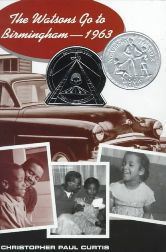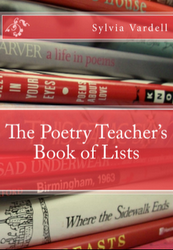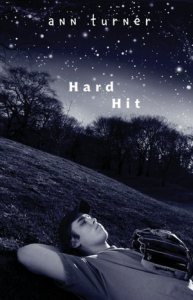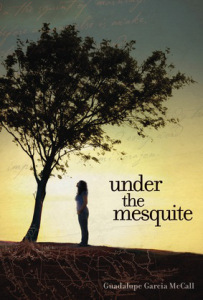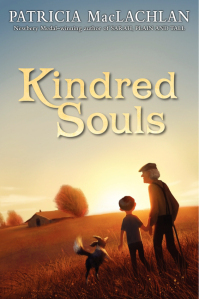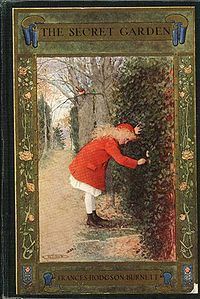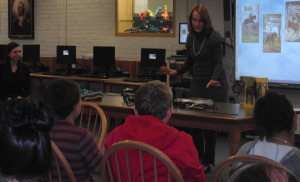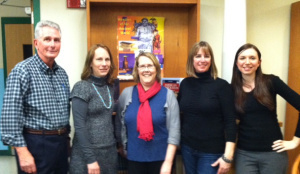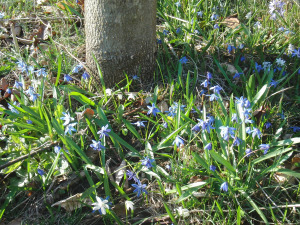Jeannine Atkins's Blog, page 27
April 26, 2012
Craft, Creakiness, and Wonder
The children’s literature class I teach, much like every other in an English Department, is ridden with reminders of how easy it is to find flaws in a book. We first take then tear things apart, trying to figure out how they work. But at some point in class somebody often protests. “But I love this book!” Yes, many of us do.
Of course then we go back to carping, but the writer in me remembers about gorgeous carpets made with intentional flaws, reminders of beautifully imperfect human hands. Is there any work of art that’s without problems? Not the Narnia books, or the text of The Invention of Hugo Cabret, we said, even as we marveled. Not Mary Poppins or Peter Pan, not by a long shot. The Secret Garden sags in the middle, and what’s with all the switching around of point of view?
Many of us hold flawed books dear. So what do we call this in a classroom? Maybe what it’s called outside. Wonder. There are moments when we stop talking and adore a page. In literature as in life, sometimes what seems random, messy, vague, or even wrong is more inviting than a smooth surface or clear message. In The Cambridge Companion to Children’s Literature, Lissa Paul writes about Charlotte’s plan to save a life with writing, and notes that with so much at stake, Charlotte choose “Some Pig” as her first words: “colloquial, rural, grammatically dubious and puzzling. But those who could endanger Wilbur ponder the words more than they might if Charlotte had written the clichéd commandment ‘Thou Shalt Not Kill’ into her web.” We all like to be given small choices, and sometimes we find them within prose that’s ambiguous, rough, or imperfect by some standards.
A book is a collaboration between the writer and reader, and some mistakes conjure their own magic. A student just told me about writing a paper while silently begging the author for her forgiveness. Yes, we can pick apart the prose, then go back and cherish some words the way we’d accept any gift: perhaps not looking too closely, but instead treasuring the exchange.








April 23, 2012
Literary Theory, from a Slant
“It is an extraordinary document… and it makes me realize how lucky I was (when I was writing the book) that I didn’t know what in hell was going on.” — E. B. White in response to a scholarly analysis of Charlotte’s Web
As a professor, I encourage taking apart children’s books, careful as cobblers, to understand how they were put together. Or is how the wrong word? As a creator, I don’t line up measuring tools, knives, and pencil as a shoemaker might. I don’t set theme, structure, tone, and pacing on the table, then stitch or clip away. It’s a messy process.
So are writers best off just writing, or should we study theory? In grad school, I focused on writing fiction, putting together what other students learned to take apart. While I begin writing fiction and poems in some sort of innocence – a person or image snags me, and I follow – at some point in revision, I start to identify structures, and knowing what Aristotle, Jung, or other theorists said can strengthen what’s on my page. None of us are writing a hero’s journey for the first time, and seeing how our work lines up with that of others can make us pare in the right places.
I’ve never set out with the idea that a stanza or paragraph needs a metaphor, but while I’m playing with an image, poking it for layers, I realize there’s one flickering under my pen, which if I lift at the right time, can set it loose. Perhaps this would happen if I hadn’t studied metaphors in literature, but my guess is not so much. This may be why many writers are addicted to craft books. Something happens in that gap between thinking about our work specifically and thinking of it in general terms.
Thinking about theory may make some writers feel too self conscious, but I find it useful as one part of the many rounds of revision. Sometimes, going back, I focus on continuity, tone, or imagery. And sometimes when I’m on my window seat wearing a turtleneck pulled over my chin, sweatpants, and fingerless gloves, I can call in the better-dressed person who draws narrative arcs on the chalkboard, or quotes Coleridge. Theories can give me enough of a shake to see what’s happening under my hand with fresh eyes. So I go back to writing without keeping much of an eye on a plan, then come out to consider the whole, perhaps maneuver a few strings and wires, then be sure they’re tucked away.
In grad school I shared an office with a PhD. candidate who loved theory, and a poet whose dark eyebrows shot up at the sounds of her long, Latinate words. Somehow we all got along, at least for a while. We need them all: theorists, poets, and makers of stories, and maybe most of all when we look for all of them inside us.








April 18, 2012
Historical Novels: How Much History is Too Much? Too Little?
Our class discussion of The Watsons Go to Birmingham—1963 by Christopher Paul Curtis touched on family relationships and the novel’s structure, but was dominated by the question of whether this novel, with a title suggesting some focus on Civil Rights, evaded the subject or racism. Was it too flip about differences between the North and South, focusing on weather more than politics? Some students felt that the book should have been more direct about suffering, that the author seemed too much like the parents in the book, too apt to let things be as long as the kids were relatively happy and supper got on the table. Some wanted stronger connections made to the outside world, while others argued that the main characters slowly learns about many things, until with a whallop and thud, racism can’t be avoided. One student pointed out the whiteness of most of our books –Alice, Dorothy, Harry Potter – and how race is taken for granted in these. What Curtis’s book provides is a similar stance: that race as a construct is part of the main character’s world, but so is being a middle child, having a lazy eye, and the everyday struggles of trying to make a friend. Should that be enough?
Some students thought they’d learned more from nonfiction about Ruby Bridges. Some think identifying with a character, rather than viewing him from the outside, as we might when considering history, can make a more lasting impression. Can one do both? Nobody much talked about the book being funny. One person mentioned that it’s unsettling that the novel ends with an epilogue about Civil Rights heroes such as Dr. Martin Luther King and Rosa Parks, then says that such heroes can be in your home, or school: they can even be you. Well, yes, but a bit of a soapbox, since part of the deliciousness of the novel is that it’s not filled with heroes, and Kenny’s first change comes about when he’s disobedient, and the second after he’s done an act he feels was steeped in fear. What the family survives might be called heroic, but we’re not given a context for that. They seem ordinary, which is one reason we like them. Kenny gets to be afraid, silent when he might talk, standing still when he might act, sometimes out-of-it, just like Jesse in Bridge to Terabithia, but both boys grow, and move us.
And just as Jesse connects to his little sister at the end of Bridge to Terabithia, the little sister gets the last scene in The Watsons Go to Birmingham—1963. We’ll meet more innocents as little sisters in The Hunger Game next week, and I wonder if some students will feel the same need to underline metaphors and messages. The book critiques current culture norms re competition and violence, but can this, though for an older audience, be allowed to entertain more than draw parallels to today? Do we expect more from a book about history, and at least partly about race?

April 13, 2012
The Poetry Teacher’s Book of Lists by Syliva Vardell
Anyone who’s read Sylvia Vardells’s blog, Poetry for Children, or her articles in Book Links has been at least a little dazzled by her knowledge, energy, generosity, and passion for spreading the word about poetry. And now we get The Poetry Teacher’s Book of Lists, brim full of titles that won contests or which Sylvia considered best of recent years, handy for those who want to check what they might have missed. Lists of poetry are arranged by topics such as paintings, music, wings, basketball, middle school angst, dinosaurs and many more, some classified by age, with suggestions of books for newborns to teens.
It’s true happiness for a bibliography nerd, like me, but if you’re not, you’ll find this book reaches beyond bare-bone lists, and should not only be on all library shelves for those wanting to develop curriculum or public programs, but handy to teachers, including parents who want to be at the ready to connect one poet who excites with another, or find related activities, books celebrating a variety of holidays and poet’s birthdays, ideas for poetry scavenger hunts, or suggestions of books written by children and teens and places where they can publish. Poetry can be a swift, joyful way to cross disciplines, and just as I cherish language arts teachers who include some math or science, I cheer on math or science teachers who slip some poetry into their classes. This book will make it easier to enrich units on insects, trees, weather, and particular parts of history, for example.
The Poetry Teacher’s Book of Lists is not just for educators, but poets, who, looking for good reading, can thumb through for collections of poems on particular themes. There are also lists of terminology and poetic forms (with definitions), useful checklists for editing, inspiring quotes, and a timeline of key moments in poetry for children. A list of poetry books available on audio, rarer than these should be, sent me to the computer to order a few.
You can get a taste of what’s inside on this blog, which is also being used to keep the beautifully produced book updated. As we move toward the end of the school year, consider this as a perfect gift for a cherished teacher or librarian. Or, of course, yourself.
Anastasia Suen is hosting Poetry Friday at Booktalking Chidlren’s Books.








April 12, 2012
Small Books for the Young about Facing Death
My class recently finished Peter Pan, where on the first page we read: "Two is the beginning of the end," and in Chapter 8, "To die will be an awfully big adventure." A bleak tone weaves between the humor and flying. I had to warn my students that even before we get to the dead bodies in The Hunger Game, which we'll read in YA week, we've got to get through The Secret Garden and the less flower-filled spring in Bridge to Terabithia.
Addressing the fact that this wonderful novel has been banned as "inappropriate for ten-year-olds," Katherine Paterson states the obvious: death comes, appropriately or not, and encountering it first in a novel can be a useful rehearsal. The open spaces and well-chosen words of a verse novel may provide a particularly good rehearsal hall, as the form allows either lingering or moving quickly through, and the fewer words make it easier to trace an arc with hope at the end.
Hard Hit by Ann Turner is told from the viewpoint of a star pitcher whose father is diagnosed with pancreatic cancer, with sections called Windup, Strike One!, Extra Innings, and Three Strikes! Mark's voice sounds like that of a real boy with everyday as well as life-changing concerns, while a backdrop of a "star-cluttered universe" is a solace and source of strength. Lying on his back to look at stars at the book's end, Mark feels the lessons and love of his father's voice.
This book about a teenaged boy whose father dies might make a good companion to Under the Mesquite by Guadalupe Garcia McCall, another novel in verse told from the voice of a girl whose mother dies. This book, which recently won the Pura Belpré Award and other honors, tells the story of Lupita, oldest of eight children in a Mexican-American family as she navigates high school, cares for her siblings, and comes to terms with her mother's cancer diagnosis. Six sections, ending with "words on the wind," show her finding the strength to honor her own dreams, which aren't her father's, by writing under the tree of the title: a tree that can last through drought and adapt to different sorts of ground.
Kindred Souls, the latest book by Patricia MacLachlan, isn't written in verse, and the loss is of a grandparent instead of a parents, but it's short with short chapters, each true word well-chosen, and a frame of birds that feels like verse. The kindred souls of the title are a boy and his sick, but vibrant-sounding grandfather, and the quiet plot revolves around the boy and his family building a sod house to surprise the grandfather when he returns from the hospital. The boy thinks the gift will keep him alive, but learns that happiness is complicated, and holding something close may be the key to a peaceful letting go. The seasons and cycles of day and night, and the close families (and cherished dog) we often find in MacLachlan's books, lend a warmth and peaceful light to a keenly felt loss.








April 9, 2012
The Secret Garden Book Club
Writing a syllabus for a children's literature survey course can get messy, even after you've determined which great books to use and sighed over great books you'll have to leave out. I want to cover the classics, so there's some movement from Alice in Wonderland to more recent gems, such as The Invention of Hugo Cabret and American Born Chinese. There's also a forward motion in readers' ages, from toddlers to teens. The weaving isn't a science or even an art, and it's just serendipity that we're reading The Secret Garden and Bridge to Terabithia in spring, which brings about change in both novels. And the fact that I love sanctuaries in books (students begin the course writing about their own remembered hideouts) and that after visiting Wonderland, Neverland, Narnia, and Oz, these two novels show special places behind a wall or across the river, but ones that can be accessed with a key or bridge, still part of the ordinary world.
Anyway, I've been so enjoying Frances Hodgson Burnett's The Secret Garden that I've nudged some of you to read or reread it. Burnett wrote for both adults and children, and in many ways, this is a better book for adults. I'm not in a book club, but remembering my daughter's Laura Ingalls Wilder fan club, I'm thinking that a club means you mostly have to read and admire. Snacks, dress up, posters, and field trips are also options, but I'm afraid you're on your own there.
If you want to get literary, you'll notice strands about imperialism, as Mary Lennox moves from India to England, and remembers her childhood while calling Colin a Rajah, playing with miniature ivory elephants, and referring to mysticism in the culture. Whenever you've got flowers, you've got sex, but we don't need to go there: many of us are still getting over Fern leaving Charlotte for Henry Fussy. There are allusions to paganism, Christianity, and Burnett's take on Mary Baker Eddy, all of which go into what what Mary calls Magic. I think Burnett would agree with Colin and Mary's mother, Susan Sowerby, who compares the world to an orange we've got to learn to share, and says it doesn't matter what you call "the big good thing….What's a name to the joy maker?"
Besides the old house with about a hundred rooms, the mysterious sounds, the girl who stamps her foot and learns to talk to robins, the secret place where friends work and play may be the reason The Secret Gardenhad held its own through the years. One of my students mentioned that not only must the children keep their time in the garden secret because they've been forbidden to go there, but they simply need a place of their own, a place away from the rule-making adults. But what do you think? What makes this book matter to you? Gush or raise questions. Everything is allowed. Extra credit if –- no, it's a club! – well, extra joy for you if you enter a garden and kiss a crocus and listen to a robin's song. All comments welcome! One word, or silence, too, is all you need to join the club.
And I'll leave you with a quote from Burnett: "I never could write anything that would bring unhappiness into the world. There is enough of that in all our lives that we cannot get away from. What we all want is more of the other things — life, love, hope — and an assurance that they are true."








Our Secret Garden Book Club
Writing a syllabus for a children's literature survey course can get messy, even after you've determined which great books to use and sighed over great books you'll have to leave out. I want to cover the classics, so there's some movement from Alice in Wonderland to more recent gems, such as The Invention of Hugo Cabret and American Born Chinese. There's also a forward motion in readers' ages, from toddlers to teens. The weaving isn't a science or even an art, and it's just serendipity that we're reading The Secret Garden and Bridge to Terabithia in spring, which brings about change in both novels. And the fact that I love sanctuaries in books (students begin the course writing about their own remembered hideouts) and that after visiting Wonderland, Neverland, Narnia, and Oz, these two novels show special places behind a wall or across the river, but ones that can be accessed with a key or bridge, still part of the ordinary world.
Anyway, I've been so enjoying Frances Hodgson Burnett's The Secret Garden that I've nudged some of you to read or reread it. Burnett wrote for both adults and children, and in many ways, this is a better book for adults. I'm not in a book club, but remembering my daughter's Laura Ingalls Wilder fan club, I'm thinking that a club means you mostly have to read and admire. Snacks, dress up, posters, and field trips are also options, but I'm afraid you're on your own there.
If you want to get literary, you'll notice strands about imperialism, as Mary Lennox moves from India to England, and remembers her childhood while calling Colin a Rajah, playing with miniature ivory elephants, and referring to mysticism in the culture. Whenever you've got flowers, you've got sex, but we don't need to go there: many of us are still getting over Fern leaving Charlotte for Henry Fussy. There are allusions to paganism, Christianity, and Burnett's take on Mary Baker Eddy, all of which go into what what Mary calls Magic. I think Burnett would agree with Colin and Mary's mother, Susan Sowerby, who compares the world to an orange we've got to learn to share, and says it doesn't matter what you call "the big good thing….What's a name to the joy maker?"
Besides the old house with about a hundred rooms, the mysterious sounds, the girl who stamps her foot and learns to talk to robins, the secret place where friends work and play may be the reason The Secret Gardenhad held its own through the years. One of my students mentioned that not only must the children keep their time in the garden secret because they've been forbidden to go there, but they simply need a place of their own, a place away from the rule-making adults. But what do you think? What makes this book matter to you? Gush or raise questions. Everything is allowed. Extra credit if –- no, it's a club! – well, extra joy for you if you enter a garden and kiss a crocus and listen to a robin's song. All comments welcome! One word, or silence, too, is all you need to join the club.
And I'll leave you with a quote from Burnett: "I never could write anything that would bring unhappiness into the world. There is enough of that in all our lives that we cannot get away from. What we all want is more of the other things — life, love, hope — and an assurance that they are true."








April 5, 2012
Authors Night at Greenfield Middle School
About forty enthusiastic students and many parents showed up at Greenfield Middle School last night, ready to listen and write. Language Arts teacher Ashley Fitzroy introduced three of us as people who live nearby and who write pretty much as the students do, a notion we all developed. Ellen Feld passed around equipment used for riding and grooming horses, then asked why they thought she was showing them these things, and pointing out the uses of different kinds of bridles. She spoke about the need for authentic details, so that people reading her books about horses would believe she knew what she was talking about. And that as the owner of nine horses, she's writing about something she loves, always a good idea.
Heidi E.Y. Stemple read two poems, then while discussing the writing process asked questions that brought out how students' creative lives are much like ours. She mentioned that inspiration can come from anywhere, pointing out that I chose to write about India for Aani and the Treehuggers, and Ellen Feld draws from her horses for books such as Blackjack: Dreaming of a Morgan Horse. Sometimes inspiration is close to home, she said, revealing that she was the little girl in Owl Moon, written by her mother, Jane Yolen, and that her dancer daughter was part of the inspiration for her to write The Barefoot Book of Ballet Stories.
Here are Ellen, me, and Heidi, framed by two of our ever-so-saavy hosts: librarian Gary Rutger and language arts teacher Ashley Fitzroy.
It was great to be in a middle school and talk about using the five senses, channeling my own beloved sixth grade teacher, Mr. Cotter, who liked to say, "One picture is worth ten thousand words." He told us this was an ancient Asian saying, but when I googled it, discovered it may have been written by an advertising guy, who made up the Asian part to give it more zing. If you prefer, go with W.C. Williams's "No idea but in things." It's pictures I try to raise in reader's minds. When I asked these students to be wary of the abstract, Ms. Fitzroy, fishing for her seventh graders to supply the term they'd learned, told them to think of cement.
"Concrete nouns!"
It was a wonderful night, even though the authors, some dedicated staff, and Tim from the World Eye Bookshop lingered long enough in the library to miss the refreshments the PTO offered in the hall. I got to read a few cool stories students wrote and shake a few hands of those whose books may one day be stacked on the Author's Day table. (and thanks to Ellen, they'll also know about the math that goes into creating a book's spine!)








April 4, 2012
Yay, Poetry
I don't put The Secret Garden on the syllabus for April just because of the season, but some students do enjoy reading on porches hearing robins. Crocuses and daffodils are in bloom. We discussed the novel and schools, libraries, and bookstores, since they just turned in papers about their observations in the field, so to speak. I then drove to Northampton, met my husband for a walk to the yarn shop, and headed to my daughter's favorite restaurant. When I asked for seats for two at the India House, Alka said, "Meeting Miss Emily? She is so nice."
"Sadly, no." But I enjoyed catching up with my friend, Margaret. Then we walked past trees in white bloom to the Smith campus to hear Eaven Boland read and talk about growing up in Ireland, then a world in which woman and poet seemed in opposition. She spoke about the heroic tradition in Irish poetry, and how she tried to claim her subjects more within "the shadows and accidents" of one's personal life. She read a poem about her mother filled with things from her kitchen, the sorts of beloved objects that change with time. She read a little about the influence of Sylvia Plath, one of Smith's many famous alums, and Adrienne Rich, who died just days ago, from A Journey with Two Maps: Becoming a Woman Poet.
She read more from Domestic Violence, showcasing moments that flicker from the past, that she sort of breathes on to heighten the flame. A bit of a story turns larger, so that those who seemed to escape history are no longer hidden: that's what I love about her work.
It was dark when we left, and as Margaret and I walked down the paths, some students on clunky bicycles with big wire baskets wove around us. One young woman shouted to the other, "Yay, poetry!" Her sweet voice, her pedal-pumping feet, made me feel spring has really come.








April 3, 2012
Progressive Poetry
Some of you have played games of starting a story, then letting a friend move it forward, to be picked up and carried on by the next. As part of a celebration of National Poetry Month, lovely Irene Latham has lined up a progressive poem. I'm contributing the third line on this third day of April, so the poem now looks like this:
If you are reading this
you must be hungry
Kick off your silver slippers
Robyn at Read, Write, Howl will follow up on April 4. For the complete list of how to read along, go here, where you'll also find a list of other ways to enjoy poetry this month. Including Laura Shovan's blog, featuring 30 Habits of Highly Effective Poets, where I wrote about that favorite theme, procrastination. Caroline Starr Rose, author of a great verse novel, May B, is celebrating at her blog, too: I'll be there on April 11, expounding on why everyone should read Love that Dog and Hate that Cat by Sharon Creech.
Or there when I'm not walking around my Massachusetts home, looking for signs of spring.









